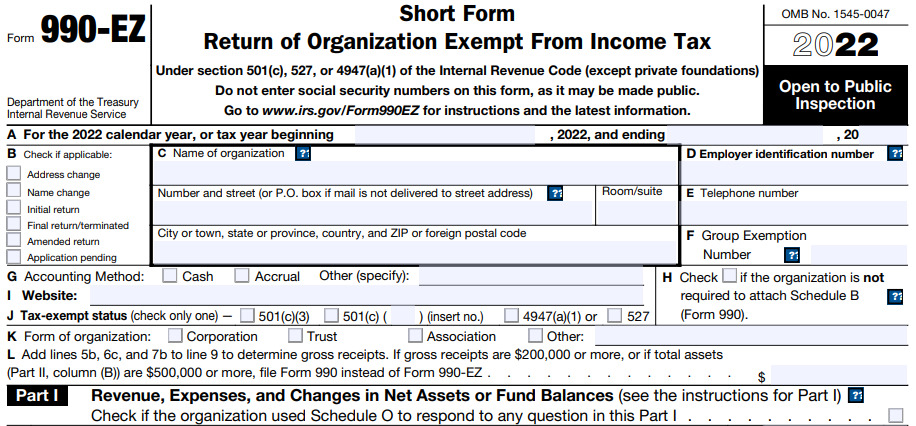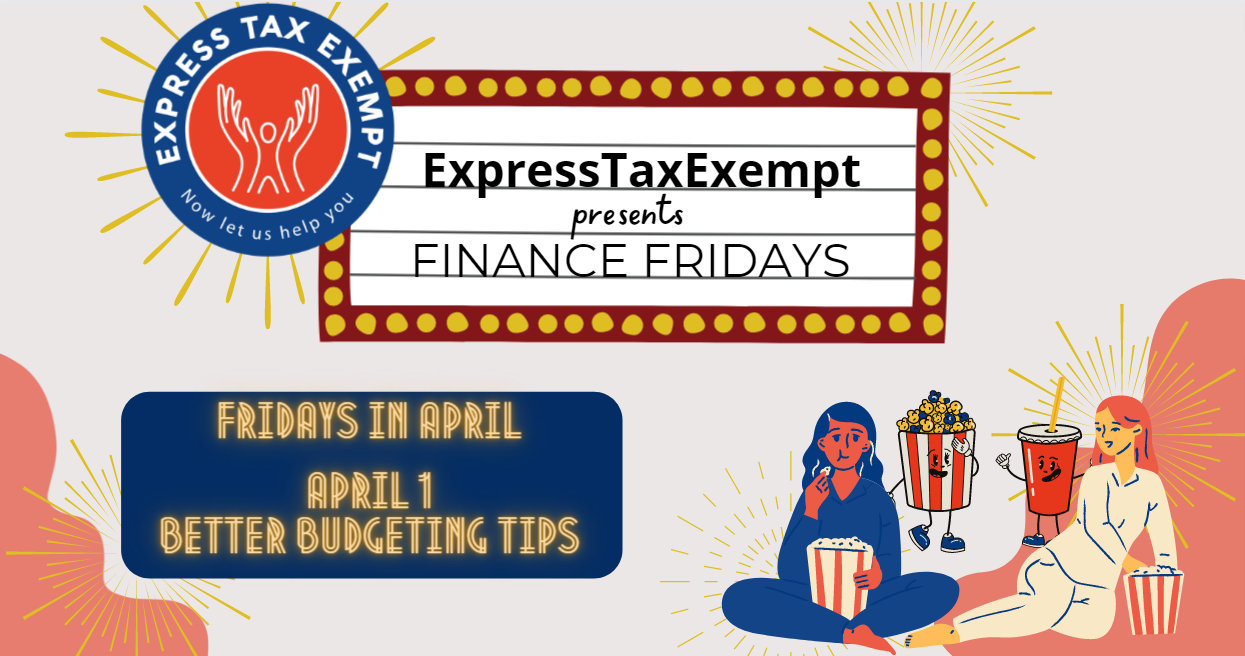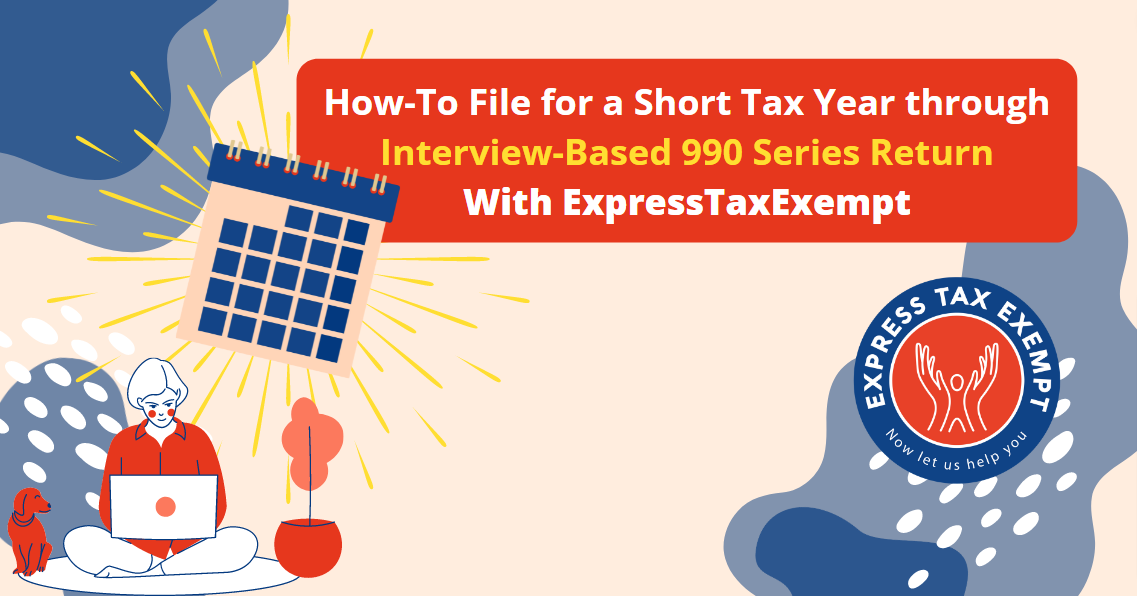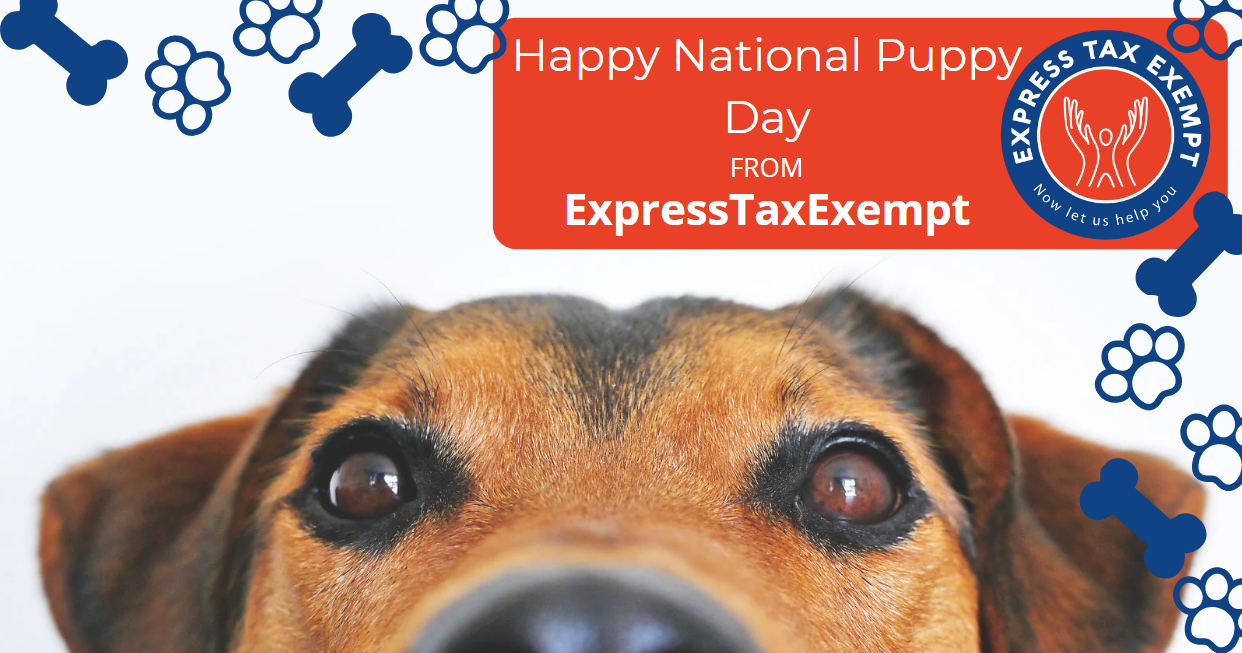


IRS Form 990 Schedule K Instructions
This article further explores the following points:
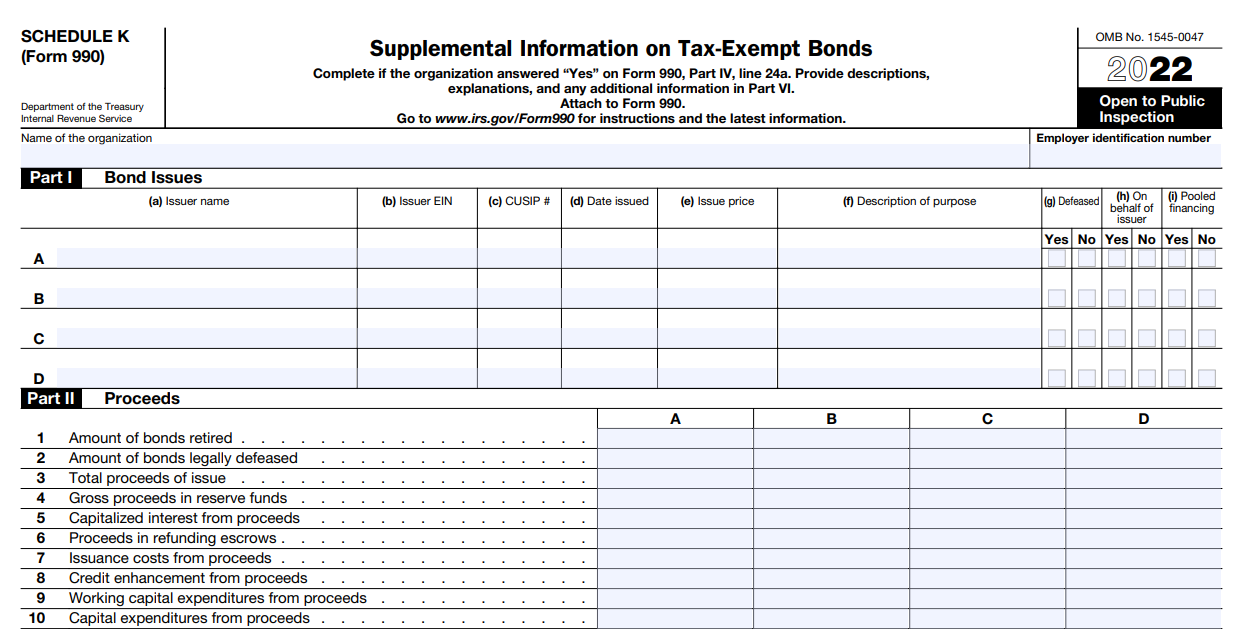
IRS Form 990 Schedule K Overview
- Updated April 21, 2023 - 8.00 AM - Admin, ExpressTaxExemptNonprofits and Tax-Exempt Organizations that file Form 990 use this schedule to report information on its outstanding liabilities associated with tax-exempt bond issues.
Table of Contents
1. What is IRS Form 990 Schedule K?
Form 990 Schedule K is filed by organizations to report certain information on its outstanding liabilities associated with tax-exempt bond issues.
Generally, a bond issue associated with a tax-exempt organization will consist of qualified 501(c)(3) bonds, but all types of tax-exempt bonds that benefit the organization must be reported.
What is a Tax-exempt bond?
A tax-exempt bond is a kind of obligation which is issued by or on behalf of a governmental unit for which the interest paid will be excluded from the holder's gross income under Section 103. A tax-exempt bond can be in any form of indebtedness under federal tax law, including a bond, note, loan, or lease-purchase agreement.
2. Who must File Form 990 Schedule K?
Nonprofits and tax-exempt organizations filing Form 990 and marked “Yes” to Form 990, Part IV, Checklist of Required Schedules, line 24a, must complete and attach Schedule K to Form 990.
It represents the organization reported an outstanding tax-exempt bond issue that:
- Had an principal amount in excess of $100,000 as of the last day of the tax year, and
- Was issued after December 31, 2002
3. Instructions on Form 990 Schedule K
Form 990 Schedule K consist of six parts:
- Part I - Bond Issues
- Part II - Proceeds
- Part III - Private Business Use
- Part IV - Arbitrage
- Part V - Procedures To Undertake Corrective Action
- Part VI - Supplemental Information
Part I of Form 990 Schedule K- Bond Issues
What is meant by the Bond issue?
This is an issue of two or more bonds which are sold at substantially the same time, sold under the same plan of financing, and payable from the same source of funds.
The organization must provide the required information for each outstanding tax-exempt bond issue (including a refunding issue) that:
- Had an outstanding principal amount over $100,000 as of the last day of the tax year (or other selected 12-month period),
- Was issued after December 31, 2002
The organization must enter the issuer Name, EIN, Committee on Uniform Securities Identification Procedures (CUSIP) number on the bond with the latest maturity, date issued, issue price, and the description of purpose.
Part II of Form 990 Schedule K - Proceeds
Part II, Proceeds, provide information about the use or investment of bond proceeds.
Organization must provide information on how the bond proceeds were spent through Part II of Form 990 Schedule K. Few questions request the amounts spent through the end of the reporting period and the disposition of unspent amounts.
Enter the following details in Part II as of the end of the 12-month period:
- Total cumulative principal amount of bonds of the issue that have or haven't been retired
- Total amount of proceeds of the bond issue as of the end of the 12-month period
- Gross proceeds held in a logically required sinking fund, pledged fund, or reserve or replacement fund
- To pay interest on the applicable portion of the bond issue during the construction of a financed capital project
- Amount of proceeds held in a refunding escrow
- Proceeds used to pay bond issuance costs
- Total amount of proceeds used to finance working capital expenditures
- Total amount of proceeds used to finance capital expenditures
- Unspent proceeds
- Year in which construction, acquisition, or rehabilitation of the financed project was completed
Part III of Form 990 Schedule K - Private Business Use
IRS Requests the information about management or service contracts, research agreements or lease agreements that may result in private business use.
Part III lists some questions regarding private business use. This part requests an organization to indicate if there are any lease arrangements regarding the financed property that may result in private business use.
There are also a few questions related to possible unrelated business income as well as the required reporting of the percentage of use by private entities.
Part IV of Form 990 Schedule K - Arbitrage
Organization must provide the information about
- Compliance with the arbitrage rebate filings Form 8038-T,
- Variable rate issues,
- Qualified hedges, and
- Investments in GICs (guaranteed investment contracts).
Part V of Form 990 Schedule K - Procedures To Undertake Corrective Action
Check with the information about the Organization established written statement to ensure the violations of Federal tax requirements are timely identified and corrected through the voluntary closing agreement program if self-remediation isn’t available under applicable regulations.
Part VI of Form 990 Schedule K - Supplemental Information
Use Part VI to provide the detailed information for supplement Part I, columns (e) and (f). Also provide additional information or comments relating to the reporting of liabilities by related organizations.

